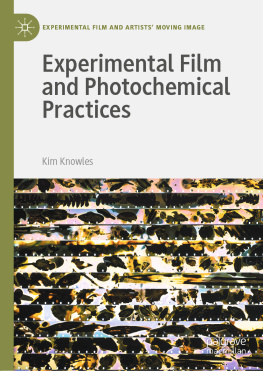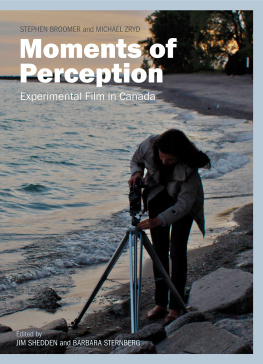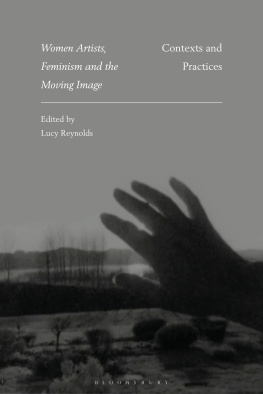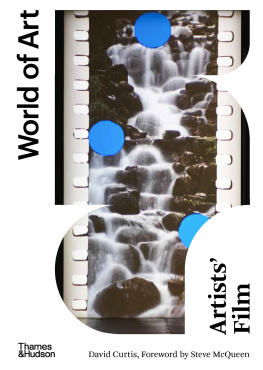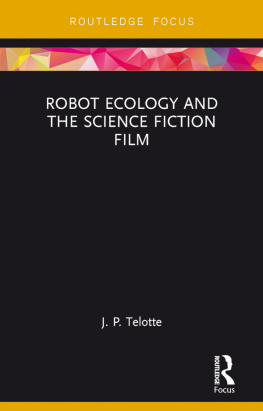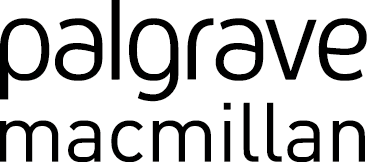Experimental Film and Artists Moving Image
Series Editors
Kim Knowles
Aberystwyth University, Aberystwyth, UK
Jonathan Walley
Department of Cinema, Denison University, Granville, OH, USA
Existing outside the boundaries of mainstream cinema, the field of experimental film and artists moving image presents a radical challenge not only to the conventions of that cinema but also to the social and cultural norms it represents. In offering alternative ways of seeing and experiencing the world, it brings to the fore different visions and dissenting voices. In recent years, scholarship in this area has moved from a marginal to a more central position as it comes to bear upon critical topics such as medium specificity, ontology, the future of cinema, changes in cinematic exhibition and the complex interrelationships between moving image technology, aesthetics, discourses, and institutions. This book series stakes out exciting new directions for the study of alternative film practicefrom the black box to the white cube, from film to digital, crossing continents and disciplines, and developing fresh theoretical insights and revised histories. Although employing the terms experimental film and artists' moving image, we see these as interconnected practices and seek to interrogate the crossovers and spaces between different kinds of oppositional filmmaking.
We invite proposals on any aspect of non-mainstream moving image practice, which may take the form of monographs, edited collections, and artists writings both historical and contemporary. We are interested in expanding the scope of scholarship in this area, and therefore welcome proposals with an interdisciplinary and intermedial focus, as well as studies of female and minority voices. We also particularly welcome proposals that move beyond the West, opening up space for the discussion of Latin American, African and Asian perspectives.
More information about this series at http://www.palgrave.com/gp/series/15817
Kim Knowles
Aberystwyth University, Aberystwyth, UK
ISSN 2523-7527 e-ISSN 2523-7535
Experimental Film and Artists Moving Image
ISBN 978-3-030-44308-5 e-ISBN 978-3-030-44309-2
https://doi.org/10.1007/978-3-030-44309-2
The Editor(s) (if applicable) and The Author(s) 2020
This work is subject to copyright. All rights are solely and exclusively licensed by the Publisher, whether the whole or part of the material is concerned, specifically the rights of translation, reprinting, reuse of illustrations, recitation, broadcasting, reproduction on microfilms or in any other physical way, and transmission or information storage and retrieval, electronic adaptation, computer software, or by similar or dissimilar methodology now known or hereafter developed.
The use of general descriptive names, registered names, trademarks, service marks, etc. in this publication does not imply, even in the absence of a specific statement, that such names are exempt from the relevant protective laws and regulations and therefore free for general use.
The publisher, the authors and the editors are safe to assume that the advice and information in this book are believed to be true and accurate at the date of publication. Neither the publisher nor the authors or the editors give a warranty, expressed or implied, with respect to the material contained herein or for any errors or omissions that may have been made. The publisher remains neutral with regard to jurisdictional claims in published maps and institutional affiliations.
Cover image: A strip of phytogram imagery from It Matters What, Francisca Duran, 2019Cover Design: eSTudioCalamarCover Image: A strip of phytogram imagery from It Matters What, Francisca Duran, 2019[note: It Matters What should be in italics]
Cover design by eSTudioCalamar
This Palgrave Macmillan imprint is published by the registered company Springer Nature Switzerland AG
The registered company address is: Gewerbestrasse 11, 6330 Cham, Switzerland
Acknowledgements
My interest in photochemical film practice in the digital era was first ignited in 2008 when I saw Jeanne Liottas Loretta (2003) projected on 16mm at the Filmhouse cinema in Edinburgh. I was running a small film festival called Diversions and Teale Failla, a postgraduate student from New York, had put together a screening of work by Liotta, Jennifer Reeves, M. M. Serra, Joel Schlemowitz among others. She probably has no idea how much that screening changed my life. Since then, most of my academic work and much of my curation has been devoted to contemporary engagements with a medium largely deemed obsolete. I have returned to Loretta constantly and I am deeply thankful to Jeanne for those images that led me on a long and exciting journey. Over the years, I have crossed paths with a great many people with a similar passion and I have been inspired by their creativity, warmth and openness. Its difficult for me to imagine this book being written without them, but its equally difficult to name them all. Every encounter, every conversation and every film screening somehow resonate through these pages. Heartfelt thanks to Jenny Baines, Erika Balsom, Dianna Barrie, Christopher Becks, Lydia Beilby, Martine Beugnet, Stephen Broomer, Brad Butler, Guillaume Cailleau, Stefano Canapa, Pip Chodorov, David Curtis, Karel Doing, Helen de Witt, Anja Dornieden, Franci Duran, Kelly Egan, Phillip Fleischmann, David Gatten, Sandra Gibson, Sally Golding, Juan David Gonzlez Monroy, Nicky Hamlyn, Bea Haut, Gabriele Jutz, Chris Kennedy, Eva Kolcze, Karl Lemieux, Luis Macas, Pablo Mazzolo, Penny McCann, Lindsay McIntyre, Miles McKane, Peter Miller, Noor Afshan Mirza, Tomonari Nishikawa, Jem Noble, Elena Pardo, Aurlie Percevault, Sasha Pirker, Greg Pope, Charlotte Pryce, Sarah Pucill, Luis Recoder, Nicolas Rey, Dachi Sato, Vitkoria Schmid, Tanya Syed, Richard Tuohy, Sarah Turner, Esther Urlus, Sami van Ingen, Erwin vant Hart, Adriana Vila, Christo Wallers and Antoinette Zwirchmayr. Thank you particularly to all the artists who went out of their way to provide me with viewing materials and images, and who let me into their creative world, explaining in detail their working methods and philosophical approach by phone, Skype or in person.
Emmanuel Lefrant, Vicky Smith and James Holcombe have been loyal friends and mentors, endlessly generous with their technical knowledge and intellectual insight and patiently explaining and re-explaining the workings of this or that machine. They have guided me throughout this journey and have inspired me to keep going. My friends at Bristol Experimental and Expanded Film (BEEF) were instrumental in helping me to understand film communities from the inside: Stephen Cornford, Matt Davies, Louisa Fairclough and Marcy Saude in particular gave me fresh insight into film processes and the spirit of invention. Marion Schmid and Angela Piccini were the most attentive readers, offering thoughtful advice and encouragement each step of the way.
Its fair to say that this book took a slight change of direction after my trip to The Independent Imaging Retreat (Film Farm) in Canada. I cannot thank Phil Hoffman, Terra Long, Chris Harrison, Scott Miller Berry, Rob Butterworth, Deirdre Logue and Janine Marchessault enough for an experience that moved me physically, spiritually and intellectually. They inspired me to think, feel, see and write differently, as did my fellow travellers on that journey: Alix Blevins, Gerry Fialka, Tara Khalili, Annapurna Kumur, Markus Maicher, Elian Mikkola, Ramey Newell, Kelly OBrien, Emily Pelstring, Mike Rollo, ngel Rueda, Cindy Stillwell and Hagere Selam shimby Zegeye-Gebrehiwot.

